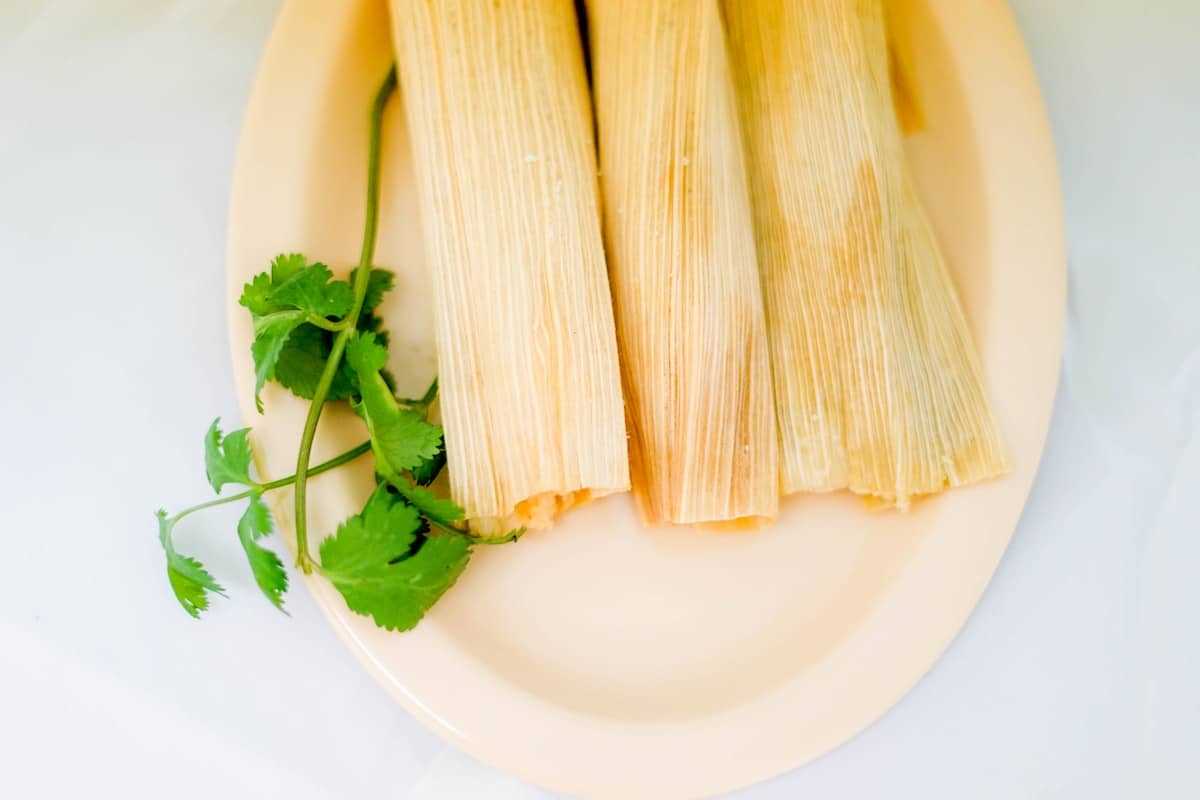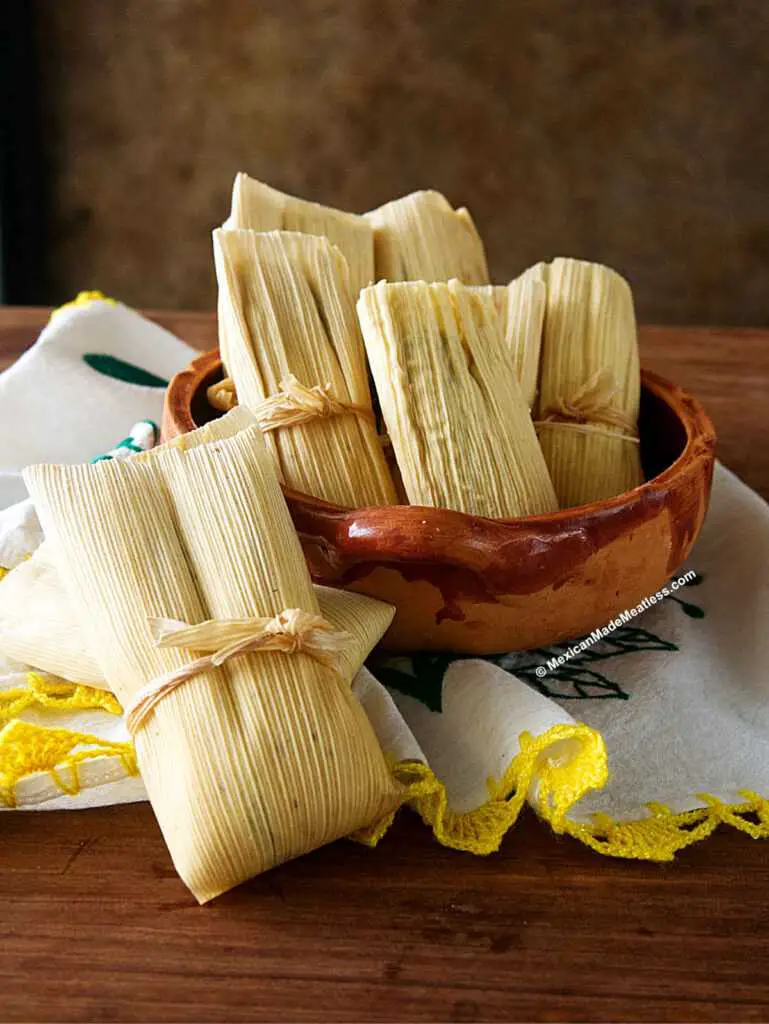Tamales are a traditional Mexican dish that is enjoyed by people all around the world. These delicious treats consist of masa, which is a dough made from corn, filled with various meats, cheeses, or vegetables, and then wrapped in a corn husk or banana leaf before being steamed. Tamales are not only tasty but also versatile, as they can be served as a main course, a side dish, or even as a snack.
One common question that many people have about tamales is how long they are good for. Like any other perishable food, tamales have a limited shelf life and should be consumed within a certain timeframe to ensure their safety and freshness. Generally, tamales can last for about 3-4 days when stored in the refrigerator. It is important to note that this time frame may vary depending on the ingredients used and the storage conditions.
To maximize the shelf life of tamales, it is recommended to store them properly. After cooking, allow the tamales to cool completely before wrapping them tightly in plastic wrap or aluminum foil. This will help prevent any moisture loss and keep them from drying out. It is also important to keep the tamales in an airtight container to prevent contamination from other odors in the refrigerator.
How Long Can You Store Tamales?
When it comes to storing tamales, it’s important to keep in mind that their shelf life can vary depending on the ingredients used, the cooking method, and the storage conditions. However, on average, tamales can be stored for up to one week.
To ensure that your tamales stay fresh for as long as possible, it’s crucial to store them properly. Here are some tips:
| Method of Storage | Recommended Shelf Life |
|---|---|
| Refrigerator | Up to one week |
| Freezer (cooked) | Up to three months |
| Freezer (uncooked) | Up to six months |
When storing tamales in the refrigerator, place them in an airtight container or wrap them tightly in plastic wrap. This will help prevent them from drying out and absorbing any odors from other foods in the fridge.
If you want to store tamales for a longer period, freezing is the best option. Cooked tamales can be frozen in freezer-safe containers or freezer bags. Make sure to remove as much air as possible to prevent freezer burn. When ready to eat, thaw them in the refrigerator overnight and then reheat them before serving.
For uncooked tamales, it’s best to freeze them before cooking. Place them on a baking sheet in a single layer and freeze until solid. Once frozen, transfer them to freezer bags or containers. When you’re ready to enjoy them, steam the frozen tamales for about 30-40 minutes or until heated through.
Remember to always label your tamales with the date of preparation before storing them to keep track of their freshness. Additionally, if you notice any signs of spoilage, such as mold or an off smell, it’s best to discard them to avoid any potential foodborne illnesses.
By following these guidelines, you can enjoy your tamales for a longer period and ensure that they taste just as delicious as when they were freshly made.
Understanding the Shelf Life of Tamales
When it comes to enjoying tamales, it’s important to understand their shelf life. Tamales are a traditional Mexican dish made from masa, which is corn dough, filled with various ingredients like meat, cheese, or vegetables, and wrapped in a corn husk before being steamed. Due to their perishable nature, it’s essential to know how long tamales will last before they spoil.
Freshly Made Tamales

When tamales are freshly made, they are best enjoyed within a few days. Generally, freshly made tamales can last up to 3-4 days when stored properly in the refrigerator. It’s vital to store them in an airtight container or wrap them tightly in plastic wrap to maintain their freshness.
Frozen Tamales

If you have a surplus of tamales or want to extend their shelf life, freezing is an excellent option. Frozen tamales can last for several months if stored properly. To freeze tamales, ensure they are completely cooled down and place them in airtight containers or freezer-friendly bags. It’s recommended to label the containers with the date of freezing for easy reference.
Before enjoying frozen tamales, it’s important to thaw them properly. The best way to thaw tamales is to transfer them from the freezer to the refrigerator and allow them to defrost overnight. This slow thawing process helps retain their moisture and flavor. Once thawed, tamales can be reheated by steaming or microwaving them.
It’s worth noting that the quality of tamales may slightly diminish after freezing, but they will still be safe to consume as long as they have been stored properly.
When it comes to reheating tamales, always make sure they are heated thoroughly. This can be achieved by steaming them for approximately 10-15 minutes or microwaving them for a few minutes until they are heated all the way through.
It’s essential to keep in mind that the shelf life of tamales may vary depending on the ingredients used, cooking methods, and storage conditions. It’s always best to use your judgment and follow proper food safety guidelines to ensure the tamales are safe to eat.
Factors Affecting the Storage Time of Tamales
When it comes to storing tamales, several factors can influence their shelf life and freshness. By understanding these factors, you can ensure that your tamales stay safe to eat for as long as possible. Here are the key factors that affect the storage time of tamales:
Ingredients Used
The type and quality of ingredients used in making tamales play a crucial role in determining their storage time. Fresh ingredients, such as masa, meat, and vegetables, contribute to the overall shelf life. Ensure that you use fresh and high-quality ingredients to maximize the storage time of your tamales.
Proper Cooking and Handling Techniques
The way tamales are cooked and handled can greatly impact their storage time. Improper cooking techniques or insufficient cooking time may lead to undercooked tamales, which can spoil quickly. Ensure that your tamales are cooked thoroughly and handled hygienically to avoid contamination and maximize their shelf life.
| Factors Affecting Storage Time of Tamales | Potential Impact |
|---|---|
| Storage Temperature | Lower temperatures slow down bacterial growth and can extend the storage time, while higher temperatures can accelerate spoilage. |
| Airtight Packaging | Properly packaging tamales in airtight containers or wrapping them tightly in foil can prevent moisture loss and maintain their freshness for longer. |
| Hygiene and Cross-Contamination | Ensuring proper hygiene during preparation, cooking, and storage can prevent cross-contamination and minimize the risk of bacteria growth. |
| Storage Duration | The longer tamales are stored, the greater the risk of spoilage. It is recommended to consume tamales within 3-5 days of preparation for the best quality. |
By considering these factors and following proper storage practices, you can enjoy your tamales for an extended period without compromising their taste and safety.
Tips for Properly Storing Tamales
Properly storing tamales is crucial to maintain their freshness and quality. Follow these tips to ensure that your tamales stay delicious for as long as possible:
1. Refrigerate Them
After cooking or purchasing tamales, it is important to refrigerate them promptly to prevent spoilage. Place the tamales in an airtight container or wrap them tightly in plastic wrap or aluminum foil. Make sure they are completely cooled before refrigerating to avoid moisture buildup.
2. Freeze Them for Longer Storage
If you want to store tamales for an extended period, freezing them is your best option. Wrap each tamale tightly in plastic wrap or aluminum foil, then place them in a freezer-safe bag or container. Label and date the package to keep track of their freshness.
Note: Tamales can be frozen for up to 3 months. Beyond that, the quality may deteriorate.
3. Reheat Them Properly
When you’re ready to enjoy your leftover tamales, it’s crucial to reheat them properly to prevent any foodborne illnesses. You can reheat tamales by steaming, microwaving, or baking them in the oven. Steaming is the preferred method, as it helps retain moisture and prevents the tamales from drying out.
Steam: Place the tamales in a steamer basket over a pot of simmering water. Cover the pot and steam them for about 15-20 minutes or until heated through.
Microwave: Wrap the tamale in a damp paper towel and place it on a microwave-safe plate. Heat it on high power for 1-2 minutes, turning it over halfway through.
Oven: Preheat the oven to 350°F (175°C). Wrap the tamales in aluminum foil and place them on a baking sheet. Bake for about 15-20 minutes or until heated through.
Remember to remove any plastic wrap or aluminum foil before reheating tamales to avoid any potential hazards.
By following these tips, you can ensure that your tamales stay fresh, flavorful, and safe to consume for a longer period.
FAQs
How long can I keep tamales in the refrigerator?
Tamales can be kept in the refrigerator for up to five days. It is important to store them in an airtight container to prevent them from drying out.
Can tamales be frozen?
Yes, tamales can be frozen for later use. They can be frozen for up to six months. It is best to wrap each tamale individually in plastic wrap or aluminum foil before freezing to maintain their freshness.
How do I tell if tamales have gone bad?
If tamales have a sour or off smell, or if there are any signs of mold or discoloration, it is a clear indication that they have gone bad and should not be consumed.
Can I reheat leftover tamales?
Yes, leftover tamales can be reheated. The best way to reheat them is to wrap them in moist paper towels and microwave them for a short amount of time, or steam them on a stovetop. Be careful not to overheat them as they can become dry.
